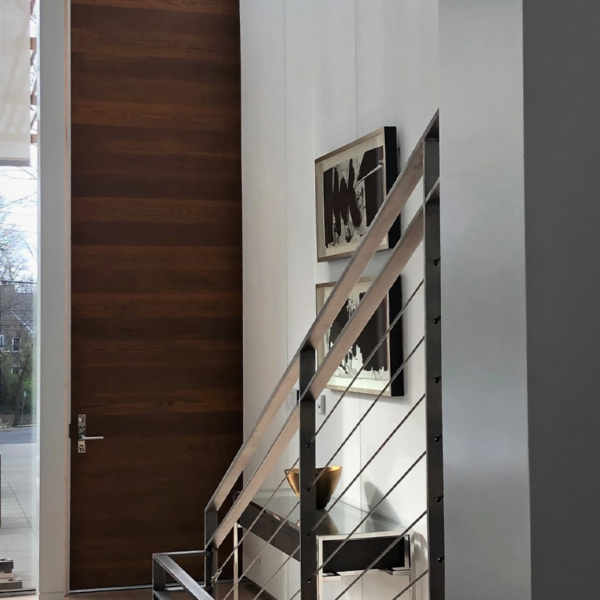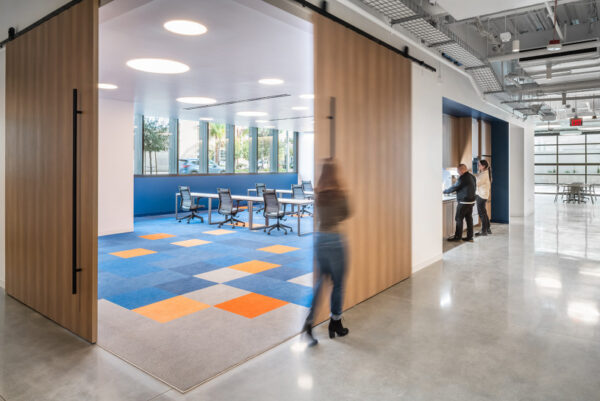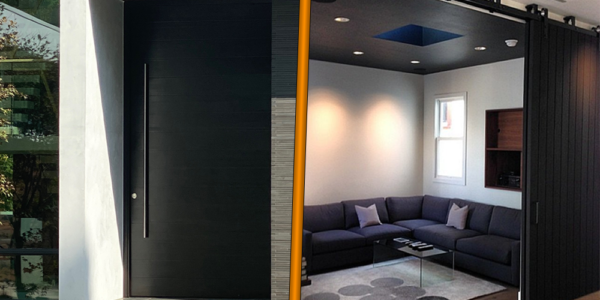Both sliding doors and pivot doors are staples in the home and commercial building space. Both provide the same basic function: allow or restrict access to an area. The way they perform that function, however, is different, and thus each one has its own sets of pros and cons to consider when planning out your project.
 Pivot Doors – Pros
Pivot Doors – Pros
Pivot doors are the classic when it comes to most doors. Rotating on an axis near the back end of the door, these doors swing out (or in) when opened and can be designed in many different ways. A pivot door may be a simple flat wood interior door or an extravagant and ornate exterior door, or anything in between. They are easy to operate, easy to install, and the standard door type.
Pivot Doors – Cons
While pivot doors are fantastic options, they do come with some limitations and drawbacks. One, a pivot door requires a much larger footprint than a sliding door, as it has to swing open in at least one direction. This means that the area around a pivot door must remain clear and unused, which can limit the available floor space in a small room or tight hallway. Additionally, pivot doors are only supported on the end with the pivot point, meaning they are constantly pulling down on their hardware and can wear on them much more over time. This can also limit their stability in some circumstances.
 Sliding Doors – Pros
Sliding Doors – Pros
Sliding doors are becoming increasingly more common in both home and commercial applications. Architects and designers are choosing sliding doors more often as time goes on due to their sleek and modern appearance, as well as the benefits they provide. There are two main options when it comes to sliding doors, the standard and what is called a “pocket door”. Sliding doors take up significantly less floor space than pivot doors regardless of which style is used, and they can be designed to be much larger than the standard pivot door without near as many complications. In addition, sliding doors are mounted on at least one, sometimes two roller tracks. This means that they are evenly supported across the width of the door, leaving no areas lacking in support or wearing heavier on the hardware. Sliding doors that slide into the nearby wall are even more safe, as they are only ever exposed to traffic or weather when closed.
Sliding Doors – Cons
While sliding doors take up much less floor space than pivot doors, unless you’re using a pocket door, they do take up wall space. Arguably still less intrusive than pivot doors, however a standard sliding door will need to slide over the wall near it when opened. Depending on the size of your sliding door, this could lead to a large amount of nearby wall space that must be left clear. If you’re using a pocket door, however, this issue is completely resolved, as the door slides entirely into the wall. Sliding doors are also a little bit more complicated to operate, though this is hardly a factor as they are still simple to use.
Conclusion
No matter which door type you choose, you can build a beautiful and functional piece. If you’re considering these options, we encourage you to look through the Sing Core website to learn more about these door types and how Sing Core can help you!

